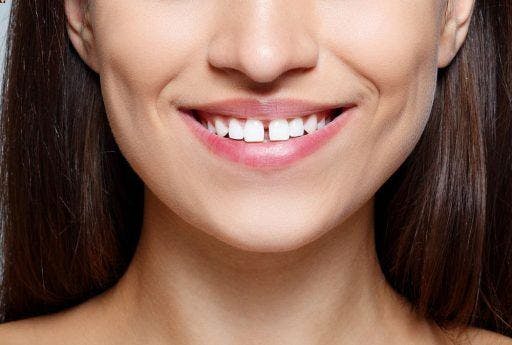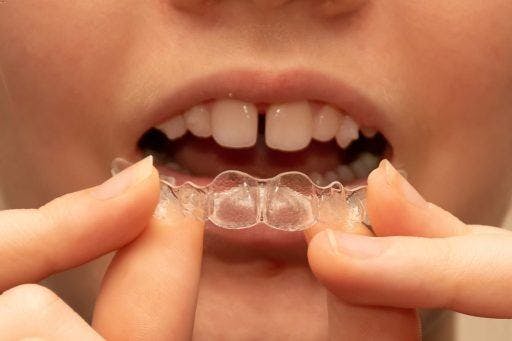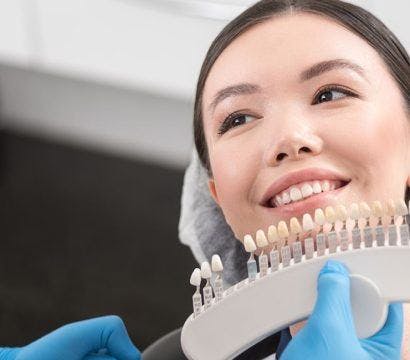Some people develop tooth gaps in childhood, while others get them when they’re older. How do they happen? Well, diastema, the clinical term for the gap between two teeth, can be genetic. Check your family pictures; your parents and relatives likely had it, too.
For some, the gap – usually between two upper front teeth – closes naturally as adult teeth come in. But sometimes, you‘ll need to get professional treatment. If you didn‘t seek solutions when you were younger, you‘re likely to maintain the space and aggravate it through certain habits or conditions.
Why are you getting gaps in your teeth?
“Most of clinical researchers believe that not only one cause but multiple factors may contribute to a midline space,” notes the Journal of Clinical and Experimental Dentistry. The following factors, or a combination of them, may contribute to a diastema in later life:
1. Missing teeth
If some of your upper lateral incisions – the teeth on the either side of your two front teeth – are missing, a gap can develop. The condition might also occur if these teeth are underdeveloped.
2. Teeth and jaw size
Genetics also play a significant role in the sizes of your teeth and jawbones. If your teeth are too small in relation to your jawbones, a diastema may form between them.
3. An oversized oral tissue
Now for some dental talk. The labial frenum is the fleshy, protruding tissue above your upper front teeth. If this tissue outgrows, a tooth gap can develop.
4. Abnormal swallowing reflexes
When swallowing correctly, your tongue should press against the roof of your mouth. However, some people push their tongue against the front teeth instead. Repetitive pressure from this incorrect swallowing reflex can lead to the development of a tooth gap.
5. Periodontitis or gum disease
Gum disease can also increase existing gaps between teeth. The inflammation of the gums can damage the jawbone supporting the teeth. As the problem worsens, teeth can shift or become loose and gaps might appear.
6. Harmful habits
“The most frequently implicated habits are thumb, digit or soother sucking,” points the IOSR Journal of Dental and Medical Sciences. These habits tend to put pressure on the front teeth, pushing them forward and creating unnecessary gaps. “Oral habits such as tongue thrusting and finger sucking can be other aetiological factors for the appearance of the midline diastema.”
Can you prevent tooth gaps?
You might not be able to do much if the underlying cause of your diastema is genetics. The gap is a physical trait inherited from your parents, and there’s nothing to prevent it.
However, for other factors like gum disease and harmful habits, you can take precautionary measures to reduce the likelihood of a gap developing. Maintain excellent oral hygiene – brush twice a day, floss daily, and visit your dentist twice a year to catch any issues early.
Are you thinking of closing your tooth gap?

No matter how the gaps between your teeth came to be, you can always close them if they make life more difficult for you. That’s right! Despite what many might believe, there’s no age limit for braces or clear aligners – two of the most common fixes for gapped teeth. You can wear them whether you’re 15 or 50.
While childhood is the ideal time to wear them, it’s not your only window of opportunity. Most dental professionals recommend them for children and teens because their mouths are still developing. As a result, their teeth and bones are more pliable, so results happen quicker.
That’s one of the few downsides of getting treated when you’re older: the process can take a little longer. But if you’re eager to have a straight, gapless smile, the wait is worth it.
The benefits of closing tooth gaps

Most experts agree that gapped teeth alone aren’t a cause for immediate medical concern. They’re what’s called a “benign condition.” So, if you’re worried that your diastema is negatively impacting your oral health, you can rest easy. However, there are still a few benefits to closing the gap.
1. It can give you a confidence boost.
Models like Lily Aldridge and Georgia May Jagger have made gapped teeth a status symbol in the high-fashion world. But not everyone can flash them with the same level of confidence. In fact, most people who treat their diastema do so for aesthetic and self-esteem reasons, which is perfectly valid.
2. It can help protect your gums.
Having teeth gaps leaves your gums more vulnerable to daily wear and tear. Have you ever bitten into a crunchy apple and felt a twinge of pain erupt between your teeth? You may have scraped your exposed gums by accident. Ouch! But fixing the gap in your teeth could have you saying goodbye to this discomfort.
3. It can lower your risk for oral health issues.
Food debris are also more likely to get stuck in smaller gaps. If you’re not diligent about flossing, these particles can increase the growth of bacteria in your mouth. The more bad bacteria there are, the higher your chances of developing problems like sensitive teeth, gum disease, and cavities.
How to fix the gap in your front teeth (discreetly)

For wide gaps, fixed or removable orthodontic devices are your best bet. However, there’s still a certain stigma attached to wearing them when you’re older. Traditional metal-wired braces, in particular, stick out like a sore thumb. Some people aren’t used to seeing them on adult teeth, so it’s normal to feel self-conscious about them.
Thankfully, you have more discreet options. ClearCorrect aligners appear nearly invisible with their stain-resistant tri-layer ClearQuartz plastic material. They also feature a high and flat trimline, allowing them to sit comfortably over your teeth. They apply sustained, gentle force to treat misalignment, closing gaps in the process. What’s more – you can easily take them off when you’re eating, drinking, or brushing, so they won’t disrupt your daily life.
Find out if you might be a candidate for ClearCorrect aligners by taking this online smile assessment.
Other possible solutions for gapped teeth include dental bonding and veneers. If you’re unsure what route to take, schedule an appointment with your dentist. Work with them to determine the best treatment plans for you.
The good news is it’s never too late to close a tooth gap. If it impacts your quality of life, consider addressing the issue. Another great thing about seeking orthodontic treatment as an adult? You have total control over the situation and the dentist you choose. This means you can create a dental plan that best suits you!
References:
Abu-Hussein, M., & Watted, N. (2016). Maxillary Midline Diastema – Aetiology and Orthodontic Treatment – Clinical Review. IOSR Journal of Dental and Medical Sciences, 15(6).
Hasan, H., Azzawi, A. A., & Kolemen, A. (2020). Pattern of distribution and etiologies of Midline diastema among Kurdistan-region Population. Journal of Clinical and Experimental Dentistry, e938–e943.



